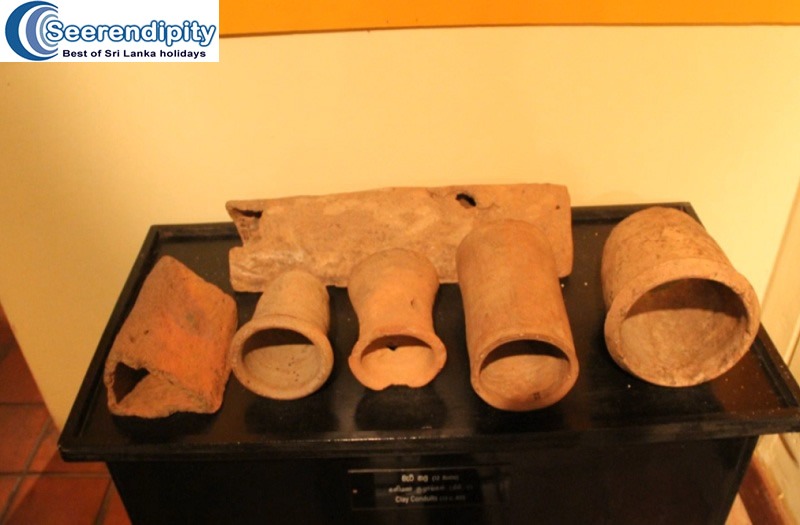Polonnaruwa Museum Hides A Thousand Years Old Treasure
Table of Contents
Polonnaruwa Museum
The lost city of Polonnaruwa is the 2nd capital of sri Lanka, which showcases some of the interesting monuments in Sri Lanka. The Polonnaruwa Museum, which showcases historical artefacts excavated by the archaeological department of Sri Lanka over the past 100 years, offers insight into the history of Sri Lanka. A visit to the ancient city of Polonnaruwa is more meaningful if you visit the museum beforehand.
Polonnaruwa Museum located in the world heritage site of Polonnaruwa exhibits a fine collection of artefacts discovered at the site of Polonnaruwa. It is a part of most trips to the Sri Lanka cultural triangle such as 5 day Sri Lanka cultural tour. The Polonnaruwa museum is relatively new and housed in a newly constructed building near Parakrama Samudra reservoir, built nearly 1000 years ago. Unlike Anuradhapura, Polonnaruwa historical museum is the only museum to visit in the city.
Tucked within the borders of the Polonnaruwa UNESCO world heritage site, the location of the Polonnaruwa museum itself is a fantastic journey through the bygone era of Polonnaruwa, Sri Lankan religious order, engineering skills, and artistic capabilities of ancient artisans.
“This was buried under the soil,” said one of the museum caretakers at the Polonnaruwa museum, as he was standing near some of the precious artefacts, and overlooking the granite stone cistern nearby. “Some of the artefacts found on the site are yet to be identified,” told the caretaker while looking carefully around. He started to walk slowly, I was behind him until he came to the third part of the building, where the visitors can see a model of a building.
Seems to be a hostel with a large number of rooms, I murmured myself. “This was a hospital in the old city during the heyday of Polonnaruwa Kingdom (1056 to 1236 AD) “; broke the silence of my guide, simultaneously my curiosity vanished.
In this room- now containing many stones and iron implements used in the hospital, he showed me several miniature knives like tools, some of them look like scissors presumably they had been used for operations. These implements must have been used for grinding, I asked him, by directing his eyesight into a granite stone with a hollow in the middle. “Yes, this had been used for grinding; mixing and chopping plant-based ingredients need to make medicine”.
The restoration and conservation are still underway in many places of the old city and all, activities are carried out under the purview of the archaeological departments of Sri Lanka. After a multi-year extensive exploration, the archaeologists have been able to unearth a labyrinth- built by Sri Lankan kings during the medieval period.
Polonnaruwa the second capital of Ancient Sri Lanka tells not only the history of Sri Lanka but also the story of waves of invasions resulting due to the Indian power-hungry Indian kings. Most parts of the city were badly damaged during the invasions and palaces, houses, parks, temples, hospitals and temples were vandalized by the invaders.
The excavation of the old city began during the British colonial era (1796 to 1948 AD). A large number of excavations was carried out so far and discovered hundreds of valuable artefacts and tons of information about one of the greatest civilizations existing on earth.
Some of the most popular places of Polonnaruwa are the Audience hall of Nissankamalla, the Palace of King Parakramabahu, Thuparama, Hetadage, Lankathilaka, quadrangle, Kirivehera, Galvihara and here is the sprawling Buddhist monastery complex, which is functioning as a popular pilgrimage site for around 100 of years.
‘” Archeological excavations are very important to understand how people lived; we need archaeology to understand how things happened in the past and to understand our tradition,” Said my guide. “Visitors and local people need to see them.”
But until the Polonnaruwa museum was opened, it was not easy. A large number of artefacts discovered at the site were stored in the Colombo Museum and many other places elsewhere. Most of them were not available to the public, especially what was not stored in the museum.
One striking fact about the Polonnaruwa museum is that they try to show how exactly the important structures such as the palace of King Parakramnabahu, Watadage, and Hospital. “These models help us to figure out what the building looked like”, said one of the local visitors to the museum. “For instance the original structure of this Watadage, you can see only a few Buddha statues, the base of the building, parts of the circular wall and a few granite pillars that were holding the roof”, said the visitor, pointing my attention to the nearby standing model.
A large number of buildings in Polonnaruwa historical city are in a very dilapidated condition because they were vandalized by the invaders, and after the downfall of the Polonnaruwa kingdom, the city was neglected and encroached by the jungle.
Making this historical evidence open to the public at the Polonnaruwa museum was hailed by many local as well as foreign travellers. Same time many other archaeological museums were opened in other historical places such as Anuradhapura. These changes take place on an island like Sri Lanka experiencing a surge in the tourism industry, with around 2 million visitors in 2018, unprecedented growth, according to the experts.
How to visit Polonnaruwa Museum
Polonnaruwa archaeological museum is located outside of the ancient city, near the Parakrama Samudra. Here are 6 popular Sri Lanka tours to visit the Polonnaruwa museum.

